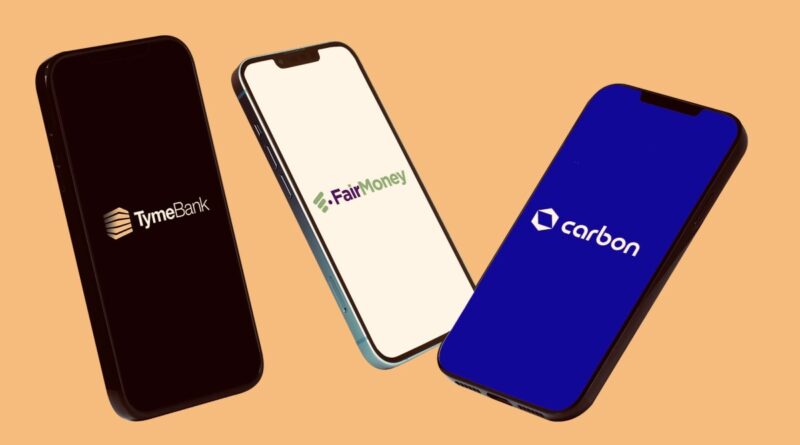Despite glimmers of profit, most African neobanks remain in the red | TechCrunch
[ad_1]
It was only just over a year ago that McKinsey described Africa’s financial technology landscape as a “hotbed for investment.” Fast forward to today, and startups on the continent are facing many of the same problems plaguing fintechs in more mature markets like the U.K. and the U.S.: valuations are tanking, growth is flagging, revenue targets are being missed, and those investors are, well, searching for a rest in another hotbed. But look a little closer, and there are some glimmers of hope amid the bigger challenges.
TymeBank, the South African digital bank majority owned by African billionaire Patrice Motsepe’s African Rainbow Capital, recently announced it became profitable for the first time in the month of December 2023.
To be clear, celebrations might be as short-lived as the bank’s profit run: TymeBank did not disclose revenue or other financials, and in fact it has only confirmed profit for that month alone — not the full year. The situation underscores the problem facing many fintech companies in Africa: despite the huge growth potential, sustained profit for many of these businesses remains elusive.
Still, the neobank now is strategically using the profit moment to curry more traction with investors. TymeBank has had a couple of mega funding rounds over the last two years, and the last of these apparently valued the startup at $965 million, according to a January report from Bloomberg. That report quoted CEO Coenraad Jonker, who said the startup was looking to raise another $100 million, valuing the company at over $1 billion.
The startup — which operates as an independent entity under parent company Tyme Group and alongside sister company GoTyme based in the Philippines — has 8.5 million users in South Africa. But while it’s still acquiring users — 150,000 users per month as of January 2024 — that figure does appear to be slowing: in 2023, TymeBank said its acquisition rate was 200,000 users each month.
TymeBank claims it is the first digital bank to break even not just in South Africa but on the whole continent. This may not be completely accurate. In the past, Nigerian fintechs Carbon and FairMoney have claimed profitability across entire financial years, no less.
Carbon publicly disclosed financials in 2018 and 2019, reporting profits exceeding $700,000 cumulatively. After a two-year hiatus, Carbon resumed financial disclosures, revealing a net income of N201 million ($478,500) for the financial year ending June 30, 2022. Similarly, FairMoney posted a profit after tax exceeding N1.6 billion ($3.9 million) for the financial year ending December 31, 2021. Both of these have been conspicuously silent in more recent times, though.
What makes a neobank profitable?
As we wrote this January, deposit-led digital bank Kuda is among the fintechs chasing profit. Kuda is hinging its own shift on scaling its overdraft and introducing more micro-lending products. The message has been clear for many fintechs like Kuda: neobanks have not managed to turn a profit on consumer deposits alone, so introducing lending products is critical.
This is not entirely new and, in fact, mirrors a lot of neobank development elsewhere. In the U.K., Starling Bank turned profitable through a two-pronged strategy of building strong deposit and lending portfolios aided by a high-interest rate environment.
Africa’s neobanks have taken different paths to get to the same place. FairMoney and Carbon began as online lenders offering instant loans and bill payments before providing accounts and cards. TymeBank, similar to Kuda, initially focused on delivering zero-to-low-fee bank accounts and savings products before venturing into credit services.
In 2022, TymeBank acquired Retail Capital as its business banking arm to complement MoreTyme, its buy now, pay later product for consumers. This acquisition alone provided over R10 billion (~$507 million) in working capital to small and medium enterprises, and that activity contributed to TymeBank’s 30% year-on-year growth in its lending portfolio. Meanwhile, FairMoney, lacking sizable deposits, turned to Nigeria’s capital markets, launching a private note program worth N10 billion ($23 million) to support its loan book growth and short-term liquidity needs. Carbon, having raised $5 million in debt in 2019, notes that its deposits constitute over 40% of its loan book.
These examples highlight the importance of stable balance sheets and a robust lending proposition for neobanks to achieve profitability. Yet, it’s crucial to note that African neobanks are still predominantly loss-making entities. TymeBank’s recent announcement of profitability, for instance, followed financials for the year ending June 30, 2023, revealing accumulated losses of R6.6 billion ($351 million) up to that point.
Interestingly, Carbon, raising the least funding out of all of these — $15 million compared to FairMoney’s and Kuda’s $90 million+ and TymeBank’s $250 million+ — has been in the black shorter than any of these (hitting profits in three out five years). It’s the smallest as a business, though, with over 3 million users compared to FairMoney’s 6 million, Kuda’s 7 million, and TymeBank’s 8.5 million.
Bad loans weigh on neobanks
One of the more significant issues that has weighed on how neobanks have performed in Africa has been the impact of bad debt.
In the fiscal year ending June 30, 2022, TymeBank reported a net loss of R976 million ($57.5 million). However, by the close of fiscal 2023, its losses fell by 20.7% to R858 million ($45.6 million). Its December 2023 result was primarily driven by significant growth in net interest income and fees and commissions incomes, which rose by 109% and 360%, respectively, reaching $28.2 million and $18 million from fiscal 2022. This robust performance contributed to TymeBank’s top-line revenue, which surged by 62% to $48.5 million in fiscal 2023.
However, TymeBank’s revenue growth didn’t come without a cost. TymeBank’s credit impairment charge, representing loans that customers couldn’t repay or deemed as bad loans, saw a substantial increase. This charge, which was a modest $65,000 in 2022, dramatically surged by 20,000% to $13 million in 2023, impacting the neobank’s net revenues, which settled at $35.5 million. Concurrently, the fintech’s operating expenses, covering staffing, depreciation, and other operating costs, increased by 9% to $81 million.
As for FairMoney, despite turning a profit in 2021 with a net income of N1.6 billion ($3.9 million), the Tiger Global-backed fintech faced challenges in 2022, ending the year with N3.73 billion ($8.3 million) in losses.
The vicissitude was influenced by a 67% increase in operating expenses, from $18.6 million in 2021 to $31 million in 2022. And though FairMoney’s top-line revenues experienced substantial growth, reaching $123 million, an 82% increase from 2021, the impact of impaired loans, surging by 138% to $101 million, weighed down its net revenue for the year to approximately $22 million.
Comparing its fiscal 2022 net revenue with the $400-500 million valuation commanded after securing a bridge round last year, FairMoney’s revenue multiple ranges from 18-22x. On the other hand, TymeBank’s revenue multiple in fiscal 2023 was 27x at its current $965 million valuation. Like Kuda’s 25x revenue multiple in 2022, these multiples are considered expensive in the current fintech market.
While growing into these valuations is an ongoing process, an immediate focus for these neobanks should be addressing credit impairment challenges. In 2022, FairMoney’s net impairment accounted for 82% of its net interest income, compared to TymeBank’s 47% in 2023; for the latter, a 200x increase from the year before should be a concern. An increase in credit loss expense reflects growth in both neobanks’ lending portfolios, however, TymeBank and FairMoney need to strengthen their credit quality amidst ongoing economic headwinds and adjust their models to consider higher loss expectations from their customers across South Africa and Nigeria.
Meanwhile, in the fiscal year 2023, Carbon grappled with credit impairment issues and Nigeria’s currency devaluation (the Naira depreciated by 49% year-to-date) and thus, couldn’t maintain its profitability that year. Conversely, in a profitable fiscal 2022, the Lendable-backed fintech had reduced credit impairment by 67% compared to the preceding year and reported approximately $6 million in net revenues. FairMoney didn’t return a request for comment if it reached profitability in 2023.
We’ll update as and when we learn more.
[ad_2]




